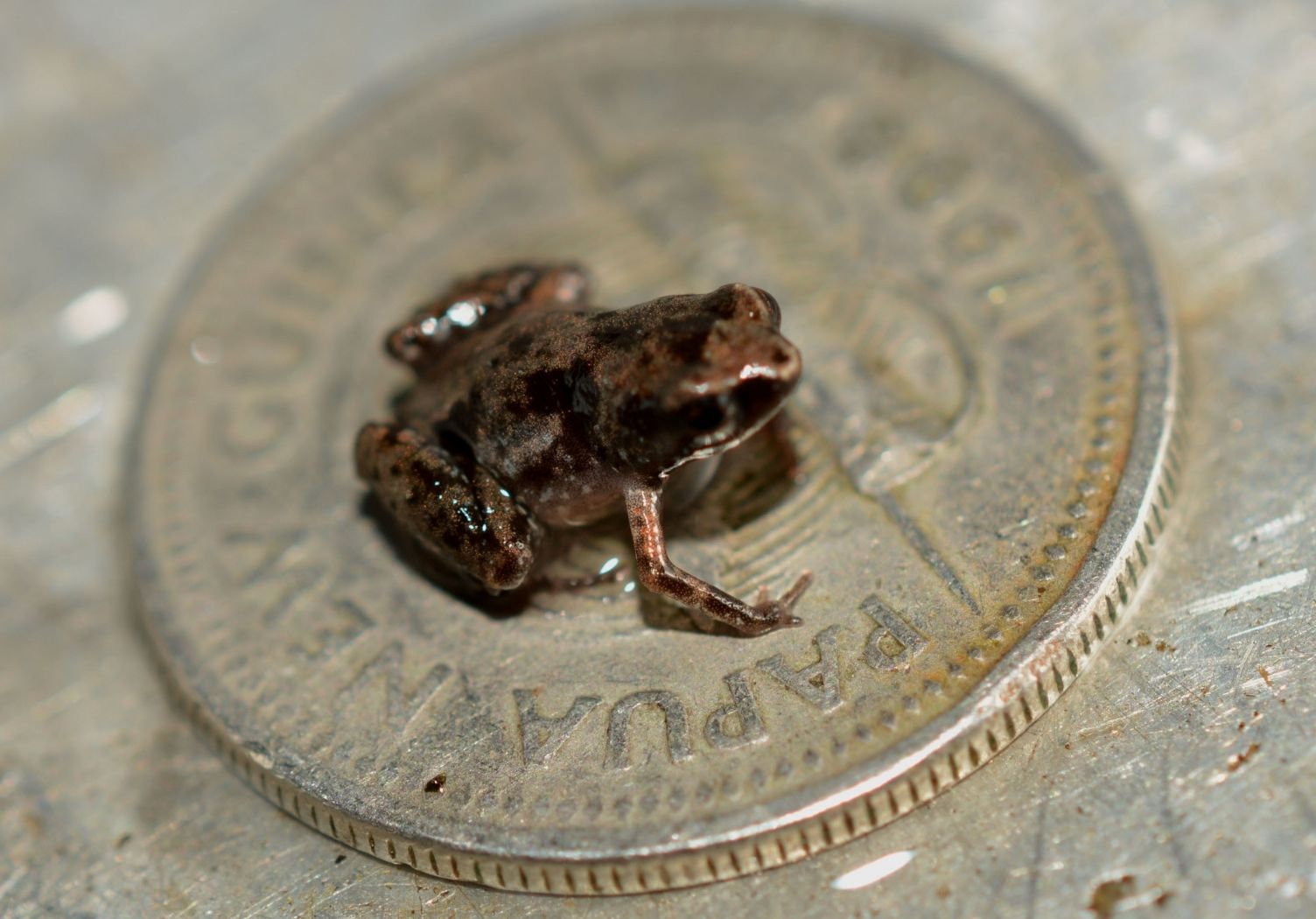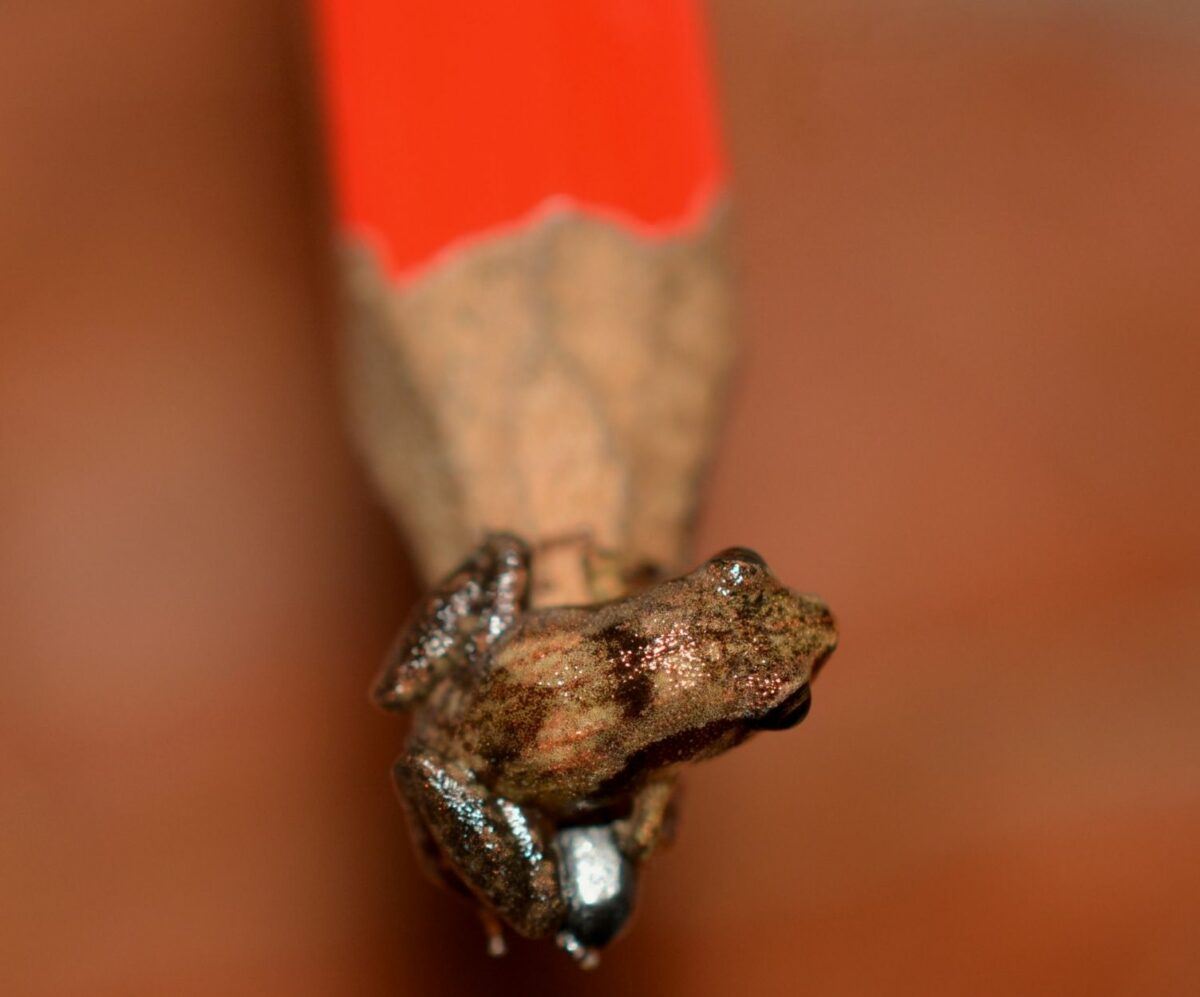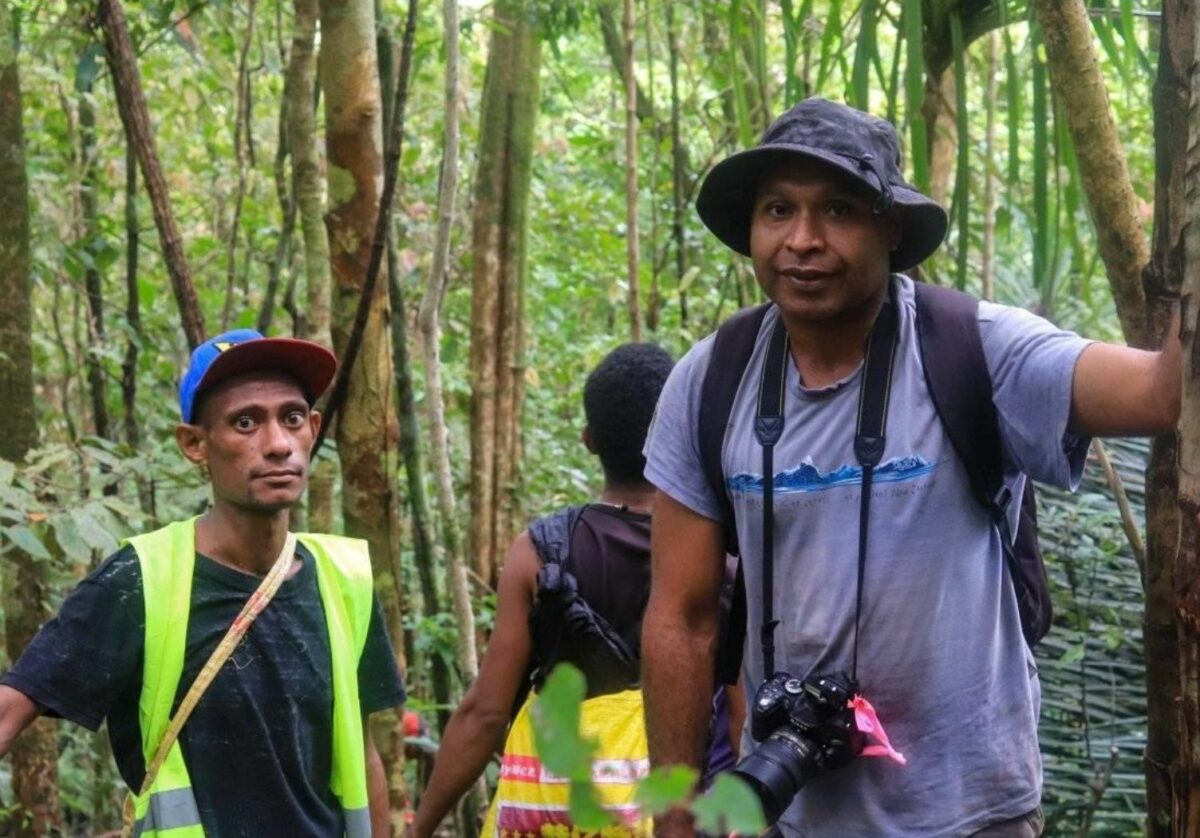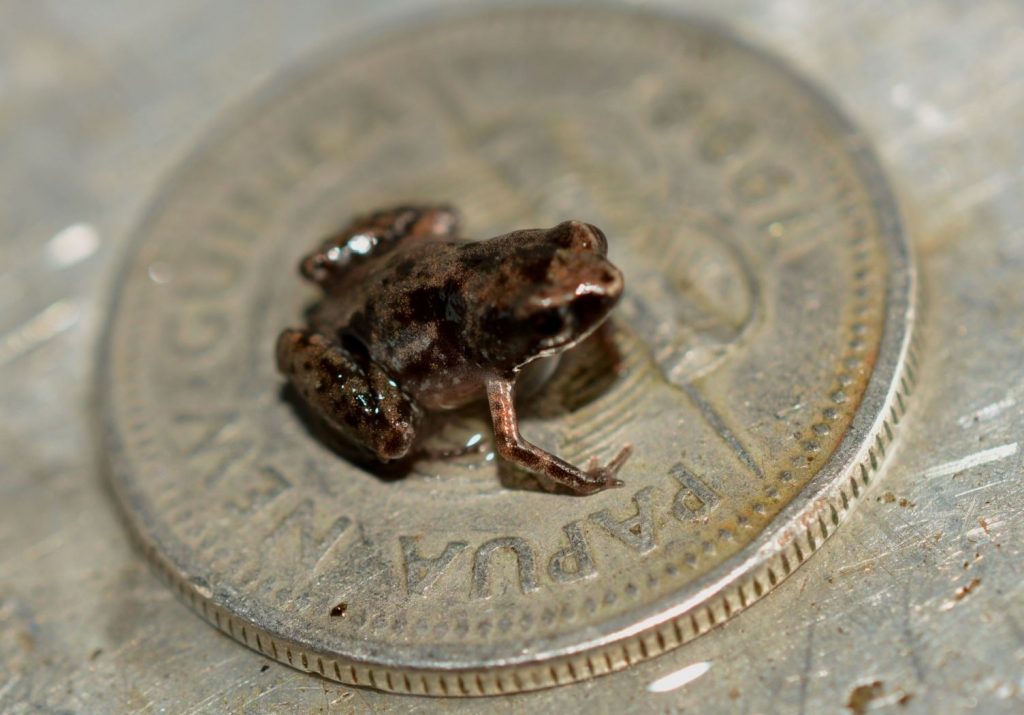
World’s Smallest Frog Living in Papua New Guinea Rainforest
Small find, big news.
At around 7mm in length, this tiny forest-dwelling frog no bigger than a housefly has been confirmed to be living in the rainforests of Wabumari, Milne Bay by Dr Chris Dahl, working with consultant Kenneth Pomoh and Cool Earth’s biodiversity officer Clifford P. Yaee, alongside the local community.
Cool Earth confirmed the tiny frog species living in this location last month when conducting a field study in the Wabumari rainforest to assess forest monitoring plots, to explore the ecological role trees play as carbon sinks in fighting the impact of climate change.


The tiny frog sits atop a pencil. © Dr Chris Dahl
Look with your ears.
Dr Dahl describes how the discovery happened, as these incredibly small frogs are near impossible to locate by eye, due to their size and colouring enabling them to blend into the forest floor:
“We were walking into the forest and I heard a high pitch ‘tsk-tsk’ insect-like call uttered within the forest floor. I stopped to try to locate where that call was coming from. I then took out my mobile to record the call, this helps you identify the exact location. Often by recording, you can tell from the strong frequency the direction of the calling frog. I zeroed in on the call location by literally placing my ear just above the leaf litter. It took me more than 30 minutes and I was positive enough I had located the frog’s position. With careful removal of single dry leaves one after another, a tiny frog hopped out. I was just an inch away. It was the smallest frog I ever identified.”


Dr Chris Dahl and Cool Earth Biodiversity Officer Jack Joseph Kostolo. Wabumari, Milne Bay.
Among large-bodied vertebrates, frogs make up nearly 5% of the world’s species diversity, having lived on the planet since the Jurassic Period, with fossil records dating back as far as 55 million years ago.
Papua New Guinea is rich in frog diversity, with about 400 described species, and each varies extremely in body colour, shape, and size. The rainforests of Papua New Guinea have been identified as one of the world’s five richest biodiversity wilderness areas.


Frog species Paedophryne amauensis is pictured sitting on a Papua New Guinea 10 toea coin. Image credit: Dr Chris Dahl
What this means for people.
Cool Earth raises funds to support indigenous people and local communities living in rainforests to develop the best ways to address threats to the forest, while making communities, forests, and wildlife stronger and more resilient to climate change. As part of their work, the Cool Earth Papua New Guinea team works directly with local communities to engage adults and children alike to deliver learning experiences, with a focus on village elders sharing traditional knowledge with younger generations.
Keep up to date with all things Cool Earth Papua New Guinea by following the team on Facebook.
